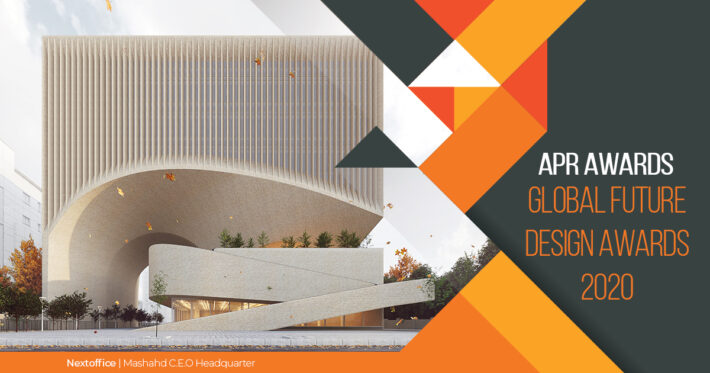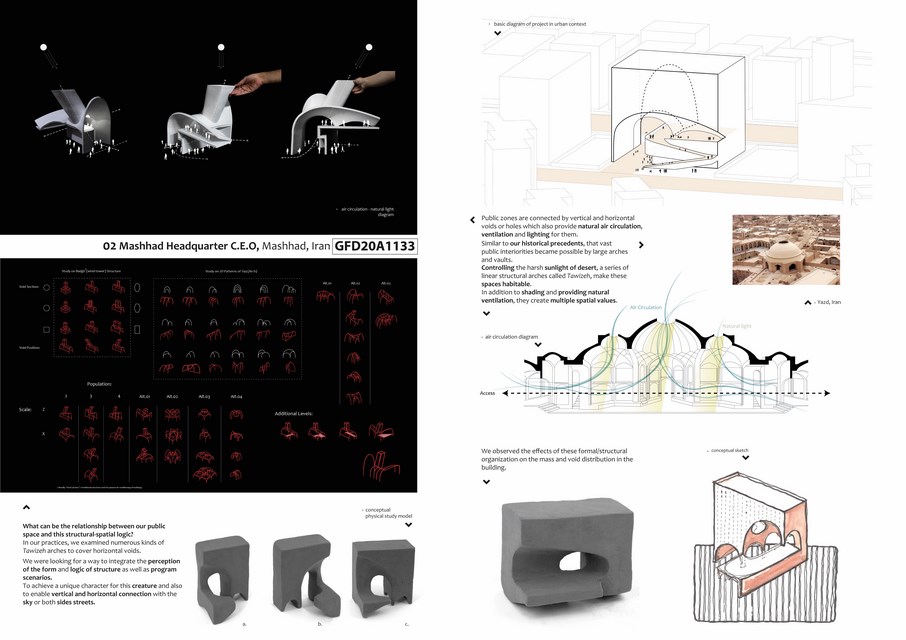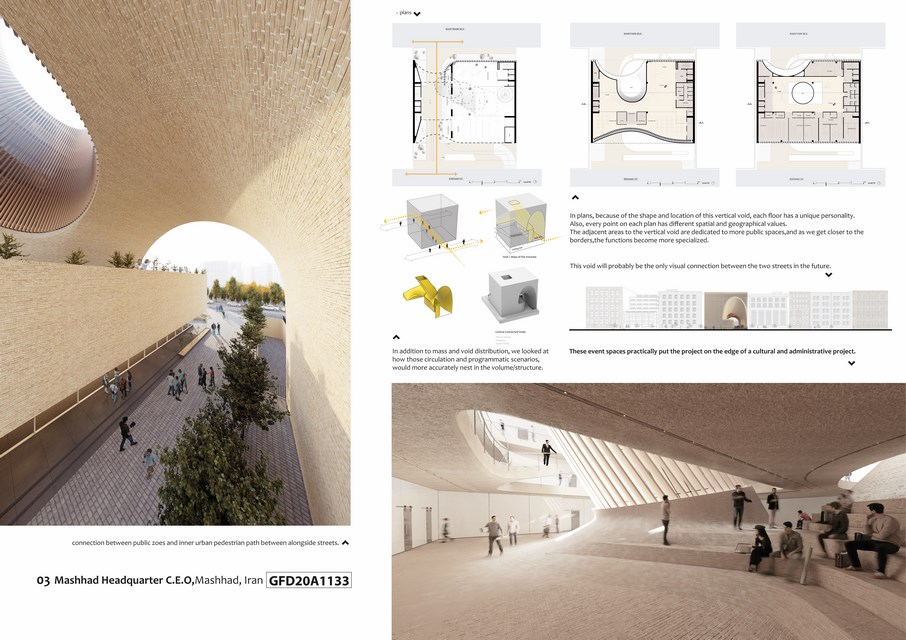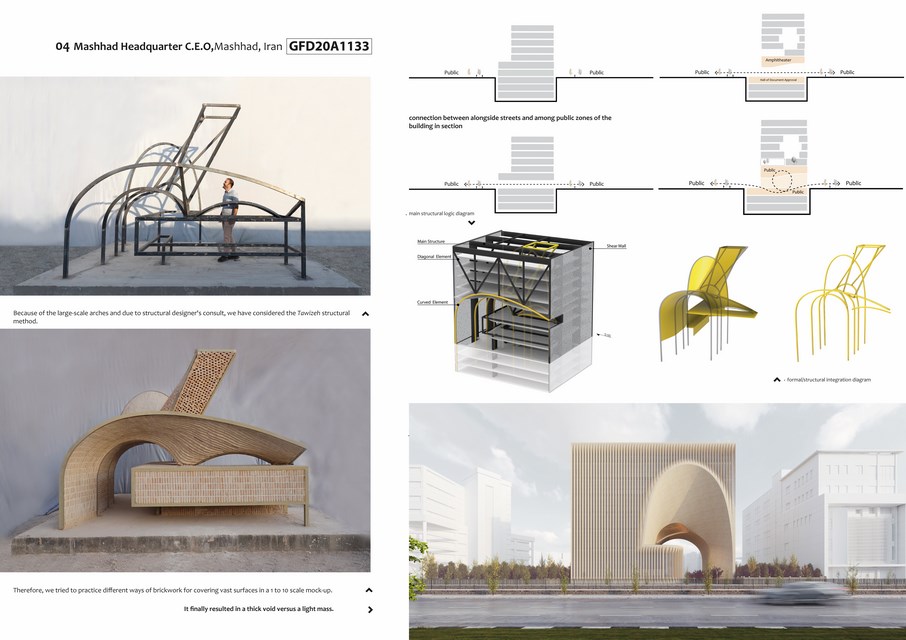Cities of Iran are generally suffering from Maximum footprint and lack of urban open spaces.
How can we think about the distribution of open space through the bulky mass of urban blocks? And in the same time question an organization which authorize these codes, by mediating of architecture? In a city like Mashhad, in a competition for designing a new headquarters for the organization itself. Is it possible to marry a city block with a pedestrian promenade by extending sidewalks?
3rd Award- Global Future Design Awards 2020
Firm | Nextoffice
Architect/Designer | Alireza Taghaboni
Category | Office Building Concept
Team | Alireza Taghaboni with Homa Asadi, Mohamad Motamedinia (+Project Manager), Majid Jahangiri, Sepideh Sarrafzadeh, Mohamadreza Gholami, Hoodad Zoroufchiyan, Roja Azizzadeh, Elnaz Kharghani, Ali Maleki, Asal Karami, Mohamadamin Zargar, Sarvenaz Rezaei, Mahafarid Kazemi
Country | Iran
Photographer/Copyright | ©Nextoffice
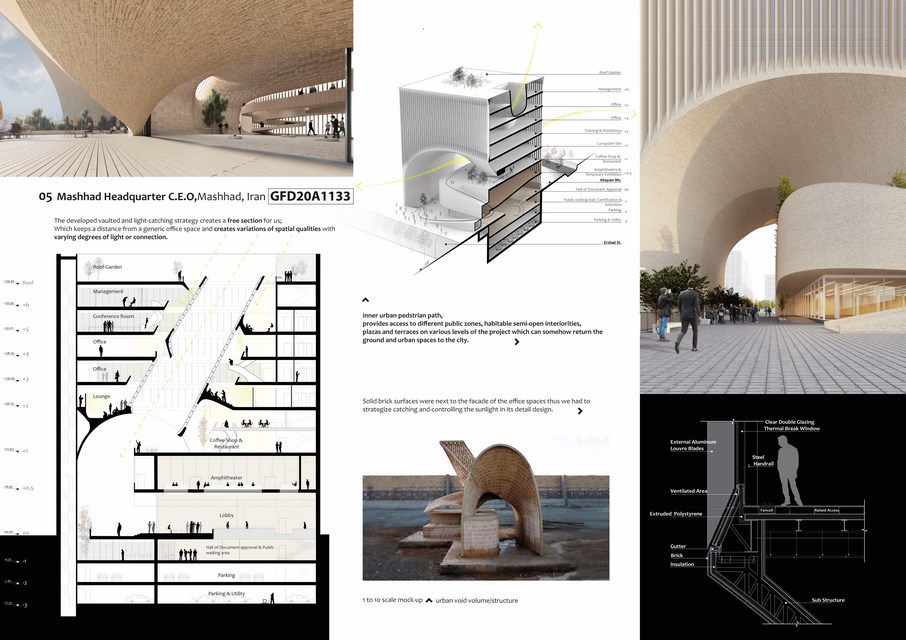
Hypering the existing potential of the program in a way that not only connects the alongside streets but also links the public zones of the building in the section. And more importantly, how does the ground we occupy from the city, is returned to the city through the open and public space at various levels?
Mashhad C.E.O Headquarter, is a place where engineers can gather and communicate with each other. We recognized that Amphitheater carries the cultural mission and Hall of document approval pursues the professional duty of the organization. Therefore, we locate them in a direct and steady relation with the path between the urban streets to make a strong public loop in the project. In other words, on the ground level, a passage through the volume links two streets across from each other and also creates a spatial-structural void that connects these streets [and guides pedestrian flow] inside the building.
Public zones are connected by vertical and horizontal voids or holes which also provide natural air circulation and lighting for them. Similar to our historical precedents, that vast public interiorities became possible by large arches and vaults. Controlling the harsh sunlight of desert, a series of linear structural arches called Tawizeh, make these spaces habitable. In addition to shading and providing natural ventilation, they create multiple spatial values.
What can be the relationship between our public space and the structural-spatial logic? We examined numerous kinds of Tawizeh arches to cover horizontal voids. We were looking for a way to integrate the perception of the form and logic of structure as well as program scenarios. To achieve a unique character for formal/structural creature and also to enable vertical and horizontal connection with the sky or both sides streets.
We observed the effects of these formal/structural organization on the mass and void distribution in the building. In plans, because of the shape and location of this vertical void, each floor has a unique personality. Also, every point on each plan has different spatial and geographical values. The adjacent areas to the vertical void are dedicated to more public spaces, and as we get closer to the borders, the functions become more specialized. These event spaces practically put the project on the edge of a cultural and administrative project.
Moreover, the developed vaulted and light-catching strategy creates a free section for us; Which keeps a distance from a generic office space and creates variations of spatial qualities with varying degrees of light or connection. In façades, voids are covered with brickwork and office floors with curtainwalls and blades. Thus, it resulted in a thick void versus a light mass. With mediating of arches and vault, this project is offering an alternative density distribution and the way the volume sits on the ground, to be a critique of current building codes of the engineering organization system. Inner urban pedestrian path, provides access to different public zones, habitable semi-open interiorities, plazas and terraces on various levels of the project which can somehow return the ground and urban open spaces to the city.


